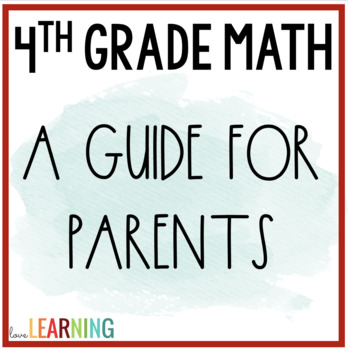4th Grade Math Review - A Guide for Parents
- Zip
What educators are saying
Description
This 4th Grade Math Guide for parents is the perfect resource to use at the beginning of the year or during parent-teacher conferences. It provides all of the 4th grade Common Core standards with examples that parents can use as a reference tool at home. It also has questions that you can use for spiral review or intervention, and it is a great resource for new teachers!
As a mom and a teacher trying to help my own kids with homework, I have realized that we as teachers need to do a better job of helping parents study with their children. Most parents want to help, but they’re not quite sure how. This has been a labor of love and hopefully, it will give parents more confidence as they work with their children at home.
This Resource Includes:
1. How to Help Your Child Study for Math Handout (includes both parent and child version)
- Use this handout as a resource for parents or students throughout the year. I have included all resources separately so that they can easily be emailed to parents.
2. 4th Grade Common Core Math Standards Checklist
- This handout lists all of the Common Core Math Standards. I have revised the wording on some of them to make them easier to understand. I have also included a guide for students. My students keep this guide in their math folders and we check off standards as we learn them.
3. Standard Sample and Answer Key
- The standard samples are useful to send home before state testing OR after you learn each concept. They are also a great tool to use in the classroom to assess student knowledge! I have included an answer key that can be emailed to parents.
4. Video and Practice Links for Each Standard
- This particular sheet includes a video link and a link to additional practice questions for each standard. I often find myself working with my children and wishing that I had a few extra examples that I could refer to.
This resource covers 4th Grade Common Core Standards. It is not editable.
Also Available:





